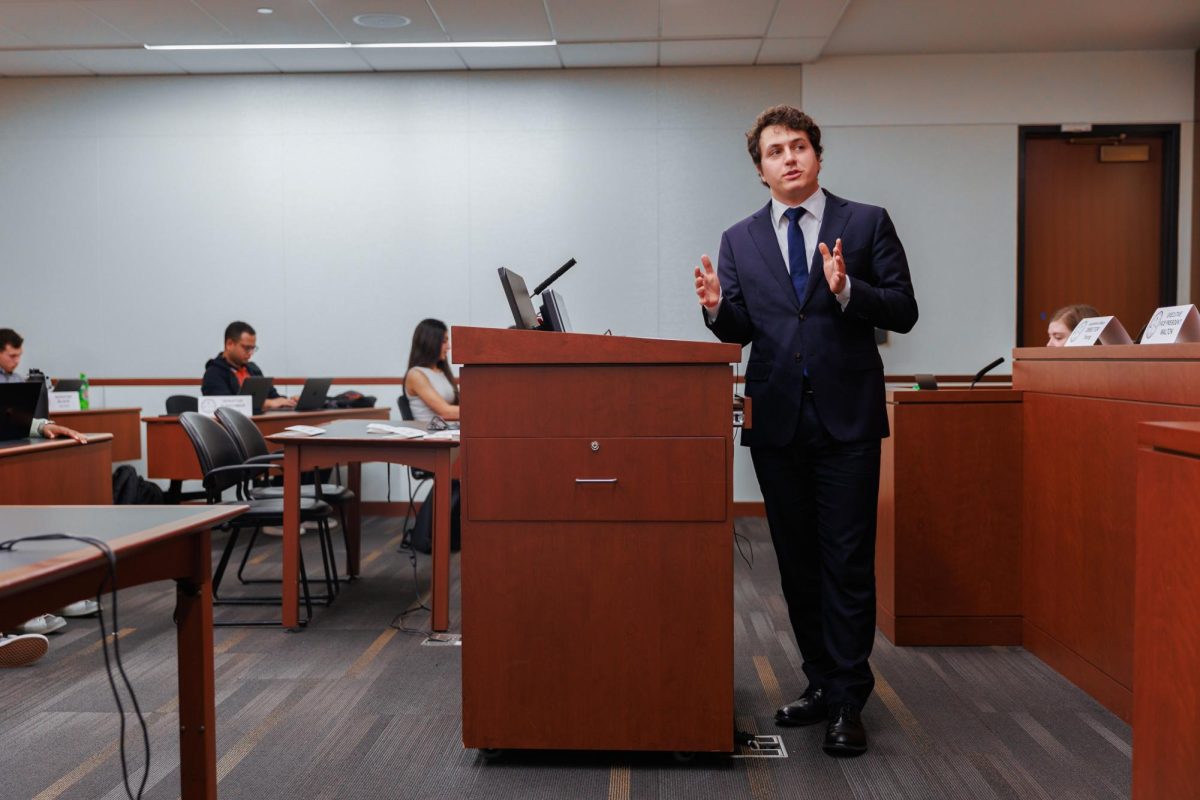Tourists visiting the District could explore a new war memorial on the National Mall by 2021.
The National Desert Storm War Memorial Association has been working since 2010 to build a memorial in the District to honor veterans of the Gulf War, a military conflict in Kuwait from 1990 to 1991. Two possible locations for the memorial were announced last month, and an official location will be named in the coming months. Advocates said the memorial would honor Gulf War veterans, who often don’t receive the same level of recognition as those who’ve served during other wars.
Scott Stump, the president of the NDSWM and a Marine Corp veteran of Operation Desert Storm – a code name for the combat portion of the Gulf War in early 1991 – said he launched the effort to build the memorial in 2010. He started the effort about 20 years after the operation, when he realized that many people – including his own children – weren’t familiar with what happened during the war.
“I felt that it was very important that this story not be lost in history and that those that served and died and all that was accomplished needed to be remembered,” Stump said.
The National Capital Planning Commission, the National Park Service and the U.S. Commission of Fine Arts are working to decide the memorial’s location by the end of the summer, he said.
“I felt that it was very important that this story not be lost in history.”
Stump said the two potential locations for the memorial include the National Mall at the intersection of 23rd Street and Constitution Ave., NW, or at the Belvedere, an area on the edge of the Potomac River. He said the memorial association is hoping to build on the 23rd and Constitution location because it’s easily accessible to pedestrians who visit popular nearby monuments, like the Vietnam Veterans Memorial.
“There’s a lot of symbolism tied to Desert Storm with Vietnam because all of the leaders in Desert Storm were Vietnam veterans,” Stump said. “It healed a lot of the wounds that were left over from Vietnam.”
Stump said the organization plans to complete the memorial by 2021, the 30th anniversary of the war, but there have been a number of delays. The group waited four years to acquire Congressional approval to build the memorial on the Mall before President Donald Trump signed a resolution to complete the project in March 2017.
The structure is still in the early design phase, but Stump said the appearance will aim to represent the coalition and the liberation of Kuwait. He said he hopes the memorial will help clear up misperceptions that people have about the Gulf War, citing that many people deem it the “hundred-hour war” and think it was an easy feat.
The conflict featured a coalition of 900,000 troops from 35 countries, led by the United States, that kicked Iraqi Dictator Saddam Hussein’s forces out of Kuwait after a month-long battle.
Advocates said the memorial would highlight an important event in U.S. history, but some critics have questioned the project online, saying it would reopen soldiers’ wounds or that the operation wasn’t significant enough to deserve a memorial because the war lasted only a short time.
Thomas Luebke, the secretary of the U.S. Commission of Fine Arts, one of the committees involved in building the memorial, said commission members decided last month that the Belvedere would be the best site for the memorial – in opposition to the war memorial association – because it’s a highly visible area that can be seen from across the Potomac River and from nearby major highways.
“It was a significant point both in international affairs and in military technology and what wars look like.”
He said the other location would restrict the memorial to a small design, because it cannot disrupt the impact of the Lincoln Memorial.
“The way that the Commission of Fine Arts ended up supporting the Belvedere site was based on the message that the Storm memorial people were saying they wanted to emphasize,” he said.
Gulf War experts said the memorial acknowledges an important part of modern American history and would be a useful tool to educate people about the events of the war.
Thomas Keaney, a senior fellow at Johns Hopkins University who conducted an analysis on airpower in the Gulf War, said the memorial will help recognize the Gulf War’s historical significance.
“The people that put the committee together recognize that not many people know about it and they ought to,” he said. “It was a significant point both in international affairs and in military technology and what wars look like.”





